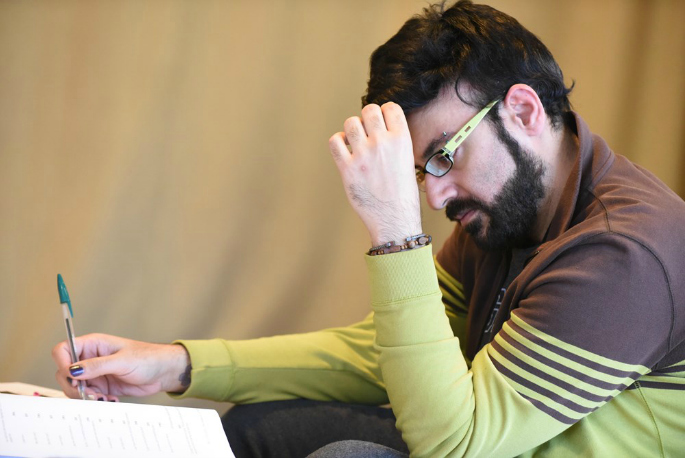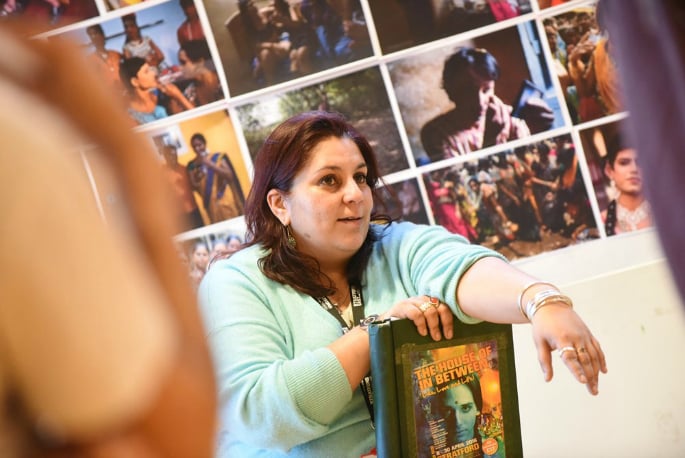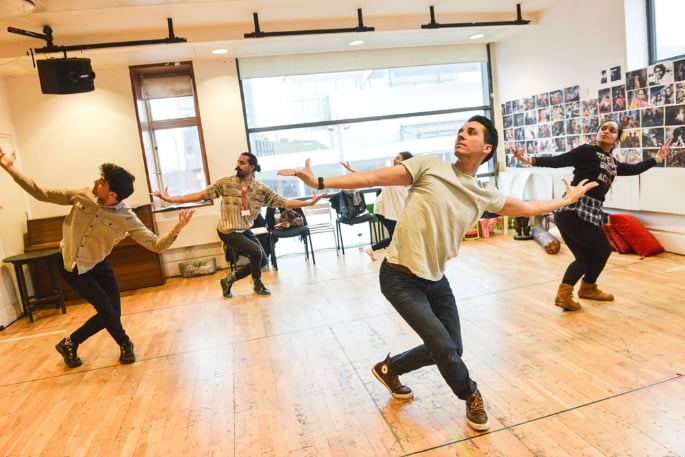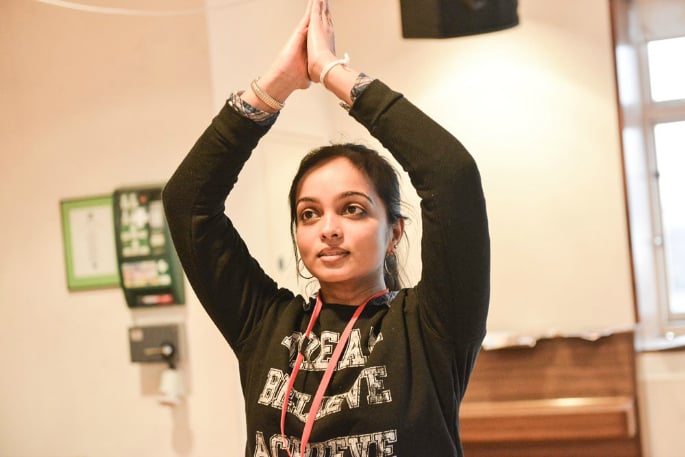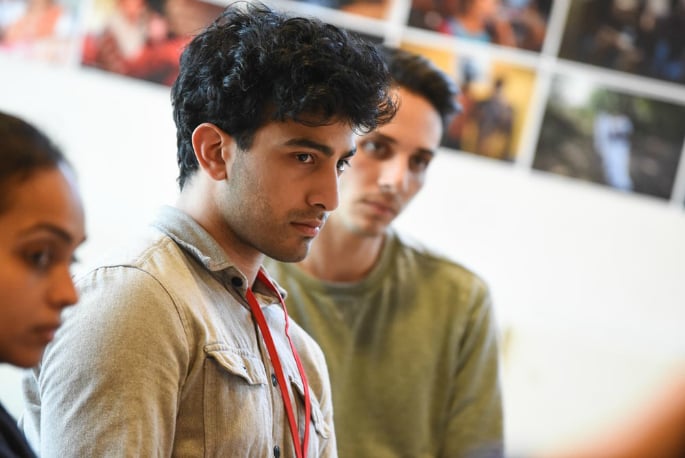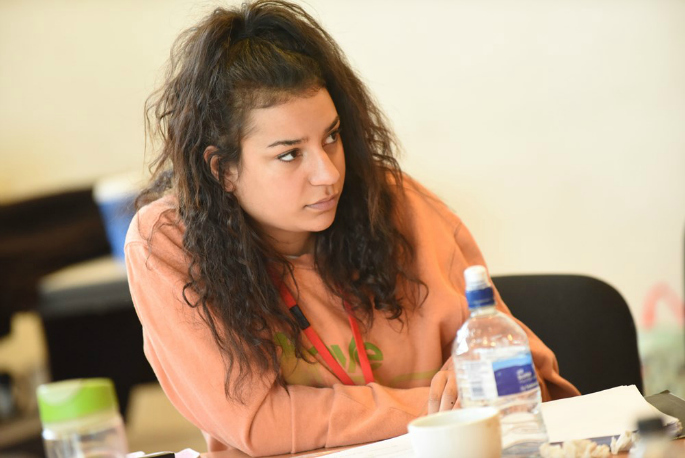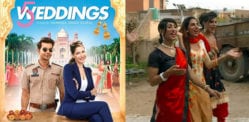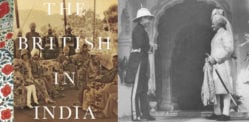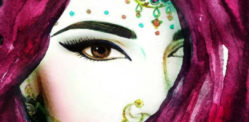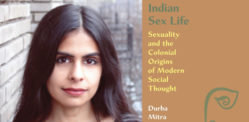"Theatre needs to be honest, risky, and dangerous without resorting to shock tactics"
A compelling new play by writer Sevan K. Greene tackles India’s third gender.
The House of In Between follows the lives of the Hijra community, in particular clan leader Uma and her quest to uphold the cultural traditions of her family in spite of the brutal social stigmas they face.
With a mix of Indian music and dance, The House of In Between takes audiences back to the heart of Desi culture and the modern mechanisms that are wiping out these historic traditions.
In an exclusive Gupshup with DESIblitz, writer Sevan K. Greene tells us more about his inspiration behind the play.
Tell us a little about your production, The House of In Between.
In the larger sense it’s about how globalisation is destroying traditions, communities and cultures that are often thousands of years old.
We see this in action through the story of a Hijra clan struggling to survive and maintain their identity while fighting for their place in a world that has no room for them.
One day a stranger arrives in need of help and their one act of charity could either save their clan or completely destroy it.
How did the subject of Hijras in India and South Asia inspire you?
It really was a random occurrence that led to my writing this play. I was doing Ayub Khan Din’s musical in NYC and during the costume parade one of my co-stars came out in his sari and did the Hijra clap and it sort of made me tilt my head and go: ‘Hm’.
I did some research and wrote the play over the 3-week run during intervals and in between scenes. The more I read about Hijras the more I was fascinated by this community that lives in a grey area socially, politically, and sexually.
It’s impressive that they’ve managed to survived despite colonialism, capitalism, and globalisation.
How was it working with director Pooja Ghai?
I was lucky enough to work with Pooja as a writer on an excerpt of my black comedy about racial profiling last year and then as an actor shortly after that.
One day I suggested that I send her some of my bottom drawer scripts for us to work on so I could make them better. She sneakily slipped the play to Stratford East who decided to do the play and my exact response was: ‘You’re crazy’.
It was a problematic play for me, but her faith in it and her guidance helped me to work on and fix it. It has surprised me how relevant it is regardless of your orientation and location.
She was spot on when she said that at the end of the day this is about a family struggling to survive and too stubborn to accept change. So many of us can relate to that.
Can you tell us more about the music and dance element of the production. Was there extensive choreography and music direction needed?
We are incredibly lucky to have Seeta Patel who is bharatnatyam trained and Arun Gosh who is known for his jazz music. They have brought such a layer of depth and authenticity to the piece that help support the story and the characters.
It was so important to me to show audiences a decolonialised play with Asians in it and Arun and Seeta’s contributions only support that. It’s about seeing the familiar in a new, and perhaps more honest, way.
It’s incredible watching them work organically in the moment and creating on-the-fly.
How did you go about deciding the design for a play like The House of In Between – what can audiences expect from Diego Pitarch’s set and costume design?
This is Pooja’s realm, I’m afraid. But what is so brilliant about her and Diego’s collaboration is their focus on abstracting this world while anchoring it in the familiar. So you’re getting a flavour but not a National Geographic tour of India.
Each element and decision being made is smartly designed to support and tell the story. Nothing is there for show or as a gimmick.
I come from a very naturalistic place, but their work has expanded my horizons and helped me to see my play in different and wonderful ways. I gave myself over to them.
Kerry Michael, TRSE’s artistic director, said something incredibly eye-opening to me: ‘You created the play and they’ll create the show’.
How prevalent is the issue of third genders and their call for rights and equality in countries like India?
It’s touched on but I didn’t want to make this a politically driven piece. You get a sense of their political place in India through the character’s problems but it was more important to me to treat them with dignity and humanity.
People still have a bigoted fear bordering on disgust about them, and although I am nowhere near being a Hijra expert, I want audiences to understand how similar they are to us even through the differences.
There are many parallels in what they go through with what happens in our own communities.
Do you feel that a lot of new generation Asian transgender people still face stigmas in their own communities?
I think a lot of transgender people across the world still deal with stigmas. What is dangerous in the case of Hijras is to lump them in with transgender communities. They are not transgender.
It is a difficult concept for Western minds to grab ahold of because their very belief system is built around not being of either gender even though they dress as women.
They are like nothing we know and to categorise them for the sake of our limited language is problematic. They are a Third Gender – postgender if you like.
Is enough being done to highlight the issues of third genders both in the East and even the West?
Nope. Not in the least. There is only one other play I have encountered about Hijras and that was written more than a decade ago.
But for me it’s always about treating the Other as person and not as object; not to reduce them down to issues that people can click ‘like’ on Facebook for and then completely forget when the next agenda pops up.
Were you wary of having a play that contains both adult themes and displays of sexual violence?
Not in the least. Theatre needs to be honest, risky, and dangerous without resorting to shock tactics. And my play doesn’t come near enough to all the harsh realities of not only Hijras, but also women and children in India.
I can’t censor reality for the sake of an audience because they get away too often with changing channels and shutting their eyes and ears because it’s ‘too much’ for them. However, all that being said it’s important that readers understand that the play is not a litany of grief and violence. It’s as much about life and love and humour.
We did a rough run of Act 1 today and it surprised even me how much I laughed. I’m not interested in a dark evening of ponderous thoughts; that’s untrue to life anyway.
Are there any key messages that you are hoping audiences will be able to pick up and resonate with in The House of In Between?
Many of them. Perhaps too many. That Asian actors are capable of more than what we give them. That theatres need to be responsible for a breadth of storytelling. That we need to make room for the grey areas and not live in binary oppositions.
That India is more than accents and hand gestures. That we need to decolonialise stories of the Other. That life is tough and wonderful. That we need to be true to ourselves and never back down from pursuing the truth. That it’s ok to just laugh sometimes at how sh** life can be.
An incredible stage production, The House of In Between stars Esh Alladi, Vikash Bhai, Ashraf Ejjbair, Akash Heer, Shalini Peiris, Lucie Shorthouse and Gary Wood.
The House of In Between will be showing at the Theatre Royal Stratford East between April 8 and April 30, 2016.
For more details about the play, or to book tickets, please visit the Stratford East website here.




















































